Spirit
4 Nontheistic Spiritual Practices
That Promote a Healthy Mind, Body, and Planet

The spiritual aspects of life include our deepest sense of self, our “place” in the universe, and our sense of connection with our friends, families, and communities.
Spending time cultivating our sense of self, savoring the sweet moments in life, strengthening our relationships, and taking good care of our communities helps us grow and live a more fulfilling life.
Many people develop their spirituality in a religious community, but for people who have chosen not to follow a prescribed religious path or theistic tradition, there are many other ways to enrich ourselves in a spiritual sense.
Here are four excellent ways to enrich your spirituality outside the establishments of formal religion:
#1
Shirin-yoku (Forest Bathing)
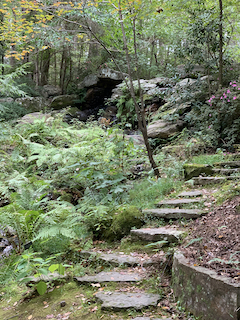
Developed in the 1980s as a response to the rise in digital overload, the Japanese practice of shirin-yoku (forest bathing) is a type of meditation that focuses specifically on nature and its beauty as we experience it through our senses.
Researchers have found that forest bathing improves our health in many ways by decreasing anxiety, improving sleep, lowering blood pressure, decreasing inflammation, and boosting overall mood.
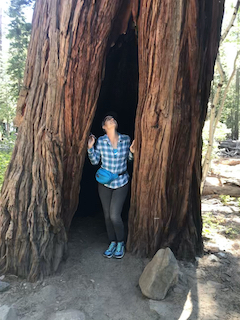
Here’s how to do it:
1) Find a piece of nature to immerse yourself in.
It doesn’t have to be an exotic location. Any natural setting will provide lots to observe: a park, a pretty neighborhood street, or an actual forest, if you can get there, will do! You can walk gently or find a beautiful place to sit on a bench or picnic blanket.
2) Unplug from the digital devices. Remain present in the experience.
3) Notice the sensory inputs surrounding you
Take in the sounds of birds or other wildlife in the area, the burbling of water flowing, the sound of your feet crunching dry leaves or pebbles, the smell of the soil or flowers, the texture of tree bark, the feeling of wind blowing across your skin, the visual beauty in the fractals in tree branches, the colors, and anything else you notice.
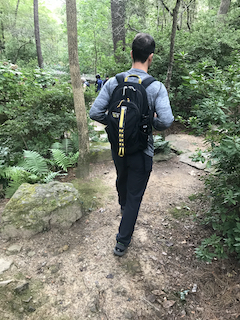
Contemplate the mysteries of the universe, the richness and complexity of your existence, and your connection with everything that ever was, is, and ever will be.
4) Remain present in the experience, and the enjoy the opportunity to slow down and fully absorb the moment.
Visit Japan Travel for more information.
#2
Yoga
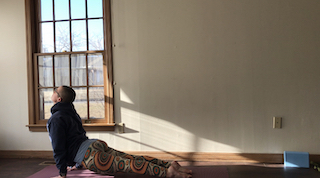
Yoga is a fantastic way to improve physical strength and flexibility while cultivating a more peaceful inner life.
This practice was developed over 5000 years ago in India, and it’s a holistic philosophy that teaches a path toward physical, mental, and emotional peace and enlightenment. It also includes a framework for developing ethical ways of interacting with others and creating positive/healthy habits in one’s daily life.
Yoga is for everyone, and it’s about more than just how far you can do the splits, how long you can hold a headstand, or whether you can touch your head with your toes.
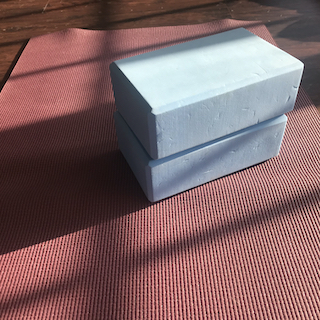
Want to begin a yoga practice but don’t know where to start? There are many styles of yoga and lots of great yoga teachers on YouTube who share tons of free content to help you get started at home.
Click around and try some different channels until you find some teachers you like. Try search terms like “gentle yoga” or “beginner yoga” if you’re new trying the asanas. I’ve made some short, beginner-appropriate yoga videos you can check out here.
Want to get out of the house? You could start attending yoga classes at a studio or find a yoga teacher to work with in one-on-one classes. Of course, there’s also a ton of information online about every aspect of yoga practice, and your journey can be as gentle or as intense as you want to make it!
There are many different styles of yoga, so you may want to try a few teachers, classes, or studios before you find what you like the best.
#3
Mindfulness Meditation
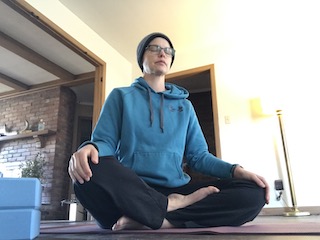
Mindfulness Meditation is the practice of taking time to be aware and fully experience the present moment. So often, what causes us stress and unhappiness is our worry about the future or our obsession with the past.
Anxiety also often arises out of an unhelpful aversion to certain conditions or events in our lives. Practicing mindfulness and equanimity helps us slow down and find contentment and gratitude in the present moment.
The concept of mindfulness meditation is quite simple but takes some practice to fully understand and experience the benefits.
How to do it:
1) Find a place to sit comfortably
You can sit on the floor with your legs crossed (the traditional meditation posture) or in a chair that allows your feet to rest flat on the floor for a balanced and relaxed posture.
2) Begin to follow your breath with your attention
You might even think “in” as you naturally breathe in and “out” as you naturally breathe out. No need to control or change the breath; just notice it.
3) Be kind to yourself and keep practicing
When your mind gets carried away with thoughts, and it will…a lot, gently (without judgement or frustration) bring your attention back to your breath.
An alternative approach:
Another method for dealing with random thoughts is to imagine each thought as a cloud floating by in the “sky of your consciousness.” Let the thought come, and let it go without clinging to it or letting it distract you from focusing on your breathing.
The Benefits of Meditation
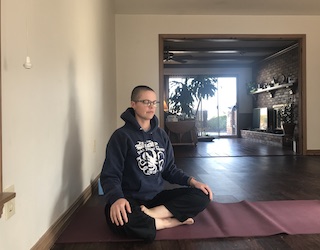
The benefits of mindfulness meditation are well-studied and documented. Here are some of the positive effects you can expect with a regular meditation practice:
- improved overall mental health
- less depression and anxiety
- lower blood pressure
- better focus/attention span
There are many other benefits, and you can find more information and apps with meditation guides through a quick search online.
#4
Volunteering
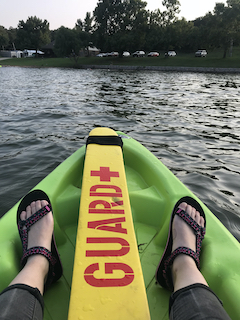
Volunteering in one’s community or around the world is a wonderful way to make a difference while deepening one’s sense of purpose and connection to life, humanity, the environment, and creating a positive legacy.
There are so many areas of need in every community, so you can choose from a wide variety of options and go with a cause that feels exciting or meaningful for you.
Here are some options from an endless list of possibilities:
- Pick up trash at a park or any other public shared space
- Spend time with animals in a shelter or animal sanctuary
- Serve at a non-profit group home for disabled people, a shelter for homeless people, or center for elders
- Collect food donations for a foodbank
- Donate money to your favorite charities or non-profits
- The list goes on…

Volunteering is a win-win for everyone!
You’ll be making a difference for people, animals, or the environment while enjoying some of these proven benefits for yourself:
- decreasing depression and stress
- learning new skills
- developing a deeper sense of purpose
- maintaining physical and mental engagement
- increasing longevity
- making new friends while strengthening a sense of community!
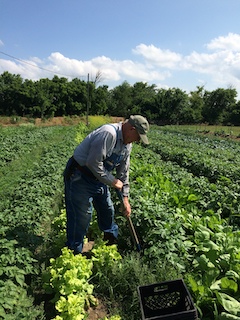
An important side note:
While serving vulnerable or disadvantaged people, be careful not to make it a social media stunt. Keep the camera out of the equation, and stay fully engaged with whomever you’re spending time with.
Protect others’ dignity and privacy. Give without the expectation of praise from others or repayment in social status.
Read more about the benefits of volunteerism here.
Take-Aways and Conclusion
You’ll find that these suggestions are awesome for anyone who wants to live a more intentional, healthy, and meaningful life, and everyone can benefit from engaging in these activities. There are so many possibilities for taking better care of yourself, improving your community, and appreciating the beauty of the planet!
Enjoy the journey!
by KaDee Bramlett
published 04/20/2021
This is an ad-free space. If you'd like to contribute to help me continue creating this content, I accept contributions on Venmo @KaDee-Bramlett. Thank you!